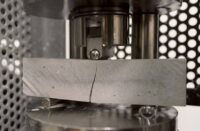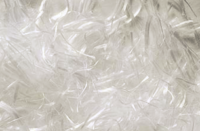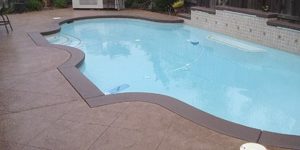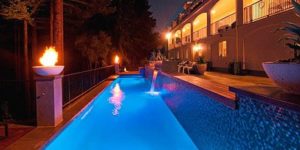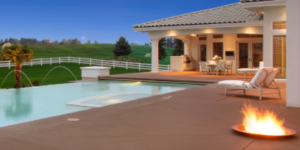When landscape architecture firm MW Peltz & Associates drafted a plan to create playground trails and basketball courts for Fletcher Cove Park in Solana Beach, Calif., it turned to one of the largest decorative concrete companies in the country, T.B. Penick & Sons Inc. of San Diego, to bring a wide range of cutting-edge decorative concrete systems to the project.
Penick’s decorative concrete group, Innovative Concrete Systems (ICS), provided the Fletcher Cove Park project with a stunning array of decorative walls, paths, courts and playgrounds.
Fletcher Cove has won a number of awards, including the 2007 Cornerstone Award and the 2007 Concrete Pavement Award for Decorative and Durable Design. “This parking lot and access area to the ocean at Solana Beach wasn’t being utilized for anything,” says Byron Klemaske II, executive vice president and head of the Penick decorative concrete group. “Now it’s a park that has grass, seating, bench walls and play areas.”
The park showcases a number of decorative concrete systems, including ICS’s patented Lithocrete, Lithocrete Quarried Stone finish for flatwork, and glass-seeded Lithocrete with bronze letterings. Even the basketball court incorporates decorative concrete, as reactive stain was used to outline different areas of the court.
This was just the latest job-well-done for T.B. Penick & Sons, which was launched more than 100 years ago and now has more than 400 employees. Over the years, the company has branched out into several divisions, including Structural Concrete and General Construction. The ICS division was launched in 1999 to focus entirely on decorative concrete. The goal was to capture a larger share of the decorative concrete business that had just started to flourish. ICS now has 130 employees and has performed decorative concrete work worldwide, including at Hong Kong Disneyland. In 2006, the company opened a new office in Columbus, Ohio.
From the beginning, the decorative division grew. ICS now claims to be one of the world’s largest decorative concrete businesses, with revenues of $18 million in 2007. “We look to be on track to do $21 million in 2008,” says Klemaske.
Grasscrete and Lithocrete
ICS offers a long list of decorative concrete systems, from porous paving and terrazzo to reactive coloration and Grasscrete — a patented process that allows grass to grow over concrete lanes. “With Grasscrete, you’re able to pour structure concrete with voids that you fill in with soil,” says Klemaske. “Then you can hydroseed or plug it and have grass grow over it while it recharges the aqua system.”
He notes that ICS uses Grasscrete for fire lanes at colleges. “Instead of stark white concrete, you have a green belt. The grass grows over it, yet it still remains a road.”
Another patented product from ICS is Lithocrete. This is an architectural concrete paving system that combines the structural properties of reinforced concrete with the aesthetic qualities of surface-seeded select aggregates. The aggregates can include crushed rock (granite, obsidian, quartz, serpentine, marble), glass (opaque or translucent in hundreds of colors), gems and minerals (turquoise, agate, pyrite, jasper), seashells, beach pebbles, or limestone, terra cotta, slate, tile and brass.
Klemaske notes that in the past, keeping small reactive aggregates embedded in the surface of concrete paving was difficult. Lithocrete was designed to permanently bond reactive and nonreactive aggregates in order to eliminate failure.
 The candy store
The candy store
ICS displays its selection of Lithocrete aggregates at its “candy store,” a showroom located at its four-acre San Diego headquarters. “The candy store had hundreds of different materials that we are able to seed into concrete during the plastic stage,” says Klemaske. “You can take those materials and make any combination you like. We invite our clientele over here so they can utilize the candy store to create.”
The company has also created interior floors in its offices that display the possibilities of decorative concrete. “People can walk through our offices and see the different patterns and colors that are possible,” says Klemaske. “It comes to life on our floors, so they can get their own ideas of how they may want to use concrete as artistic exploration.”
Going green
The recent worldwide interest in environmentally friendly materials fits well with decorative concrete. Klemaske points to a number of ways that concrete fits the growing need for green construction. “Concrete itself is green. Just look at reflectivity,” says Klemaske. “A concrete parking lot versus an asphalt parking lot means a cooler surface and lighting reflectivity. With a concrete parking lot, you need fewer lights. That means less electricity.”
He also points to pervious concrete as a green solution. “The pervious concrete allows the runoff water to enter back into the soil and recharge the aqua system rather than going into storm-water drains,” says Klemaske. “This is becoming a big deal throughout the world, especially here in the United States. We have probably installed more than 300,000 square feet of pervious concrete.”
Klemaske invites concrete contractors to use the knowledge gathered by ICS. “On a day-to-day basis, our goal is to make ourselves a resource to the industry, including landscape architects, contractors and residential homeowners,” says Klemaske. “We try hard to help them with the process and we hope that any time they have questions about concrete, they know T.B. Penick will be able to help them.”
